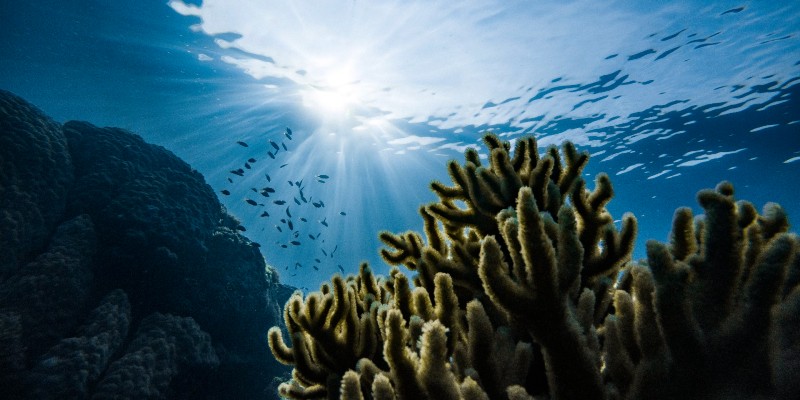Details leaked onto the front page, saturated global consciousness. The inaptly named Titan, a 22-foot deep-sea sub had gone missing.
The world was enthralled. Pernicious questions arose. How could we navigate ships to Mars, but lose them in our own oceans?
Most pressing, what fate did the frigid North Atlantic hold for those onboard if time ran out? An oxygen supply window of roughly 96-hours.
Torquing the mystery was a spectrum of paradox.
Packed inside the Titan, a white minnow with no seats and a single view-port, were mostly very rich people on a voyage to the wreckage of what was once the largest vessel in the world. The aptly named Titanic. An ‘unsinkable’ ship which because of hubris sank 111 years earlier and was now the undersea graveyard for mostly poor, third-class passengers and the ship’s working-class crew.
But the most important ingredient in the engrossing tale is the medium where it all takes place. Water.
Water mysteries thrill us like no other. Perhaps it’s because a body of water, an ocean, lake, river, flashfloods or even monsoon rains can so quickly separate us from the rest of humanity. Quite often with tragic permanence.
But we are also captivated by stories in which individuals return from the threshold of a water death and live.
Around the globe, from Buenos Aires to Bora Bora, people cried and cheered on July 10, 2018 when the last of the Wild Boars, 12 young boys and their football coach, were extracted from a flooded cave system in Chang Rai, Thailand.
A seventeen-day ordeal whose finale was a successful Hail Mary rescue performed by an ad hoc group of international cave divers and Thai Navy Seals and required fully anaesthetizing the boys with Xanax, ketamine and atropine, strapping them into flexible stretchers and full-face masks and swimming them out through miles of narrow rock passageways.
Lesser known but equally compelling is the case of Nigerian cook Harrison Okene. Okene was working aboard a tugboat in the Atlantic when it capsized and sank in 2013. He survived alone and in darkness lifting himself into a tiny air pocket.
Terrified he listened to what he believed were the sounds of marine life feeding on the dead bodies of perished crew members nearby. On his third day trapped undersea, he saw a light glowing from the water beneath him. Reached toward it.
Startled salvage divers not expecting to find anyone alive, yelled in their comms, “Corpse! Corpse! Corpse!”
The divers executed an elaborate rescue that included an impromptu diving lesson for the cook and three more days of decompression in a diving bell. It was science that kept Okene alive, but despite this he was later ostracized by some in his community claiming he had used black magic to survive. He suffered terribly from skin sloughing from the water exposure and night terrors. He vowed never to go back to the sea.
Eventually Okene’s fears dimmed. And he sought to honor his experience and his rescuers by training and becoming licensed as a saturation diver. Returning to work the sea that captured, held and nearly killed him.
But while we’re vitalized by these stories of survival, we’re also equally and morbidly fascinated by those who don’t return from water’s final embrace. The enigma of what it is like to drown filling us with both fear and fascination.
Our literature adds to this mystique even as it seeks to explain it. In Sebastian Junger’s bestselling 1997 non-fiction book The Perfect Storm, the author describes in a long-passage of chilling detail the so-called, “break point”:
“When the first involuntary breath occurs most people are still conscious, which is unfortunate, because the only thing more unpleasant than running out of air is breathing in water. At this point the person goes from voluntary to involuntary apnea, and the drowning begins in earnest.”
Fiction isn’t any kinder in this regard. In this passage from Stella Maris, the second of the late Cormac McCarthy’s final two books, psychiatric patient Alicia Western describes a suicidal ideation; death by drowning herself in Lake Tahoe wearing a leather belt padlocked to an anchor.
“First of all the water off the east shore is about sixteen hundred feet deep and agonizingly cold…As you descend, your lungs will start to shrivel. At a thousand feet they’ll be about the size of tennis balls…Your eardrums in all likelihood are going to burst and that is really going to hurt.”
McCarthy is known for the painstaking research that brings such authenticity to his work. And that fictional tragic descent brings us back now, finally, to one in true life. That of the Titan.
We learn a few days into the search the sub would indeed resurface, but only in bits and pieces. Ths hull, made of seemingly indestructible carbon fiber and titanium, had indeed destructed. Imploded. No match for the more than 5500 pounds per square inch or near 380 atmospheres exerted on it at depth.
Two years previous, OceanGate principal Stockton Rush told New Yorker magazine he wanted be remembered as an innovator and rule breaker.
He boasted, “The carbon fiber and titanium?” referring to the submersible’s hull. “There’s a rule you don’t do that. Well I did.”
And paid the ultimate price. Rush was also the Titan’s pilot.
So now we also know that in the short time from the sub’s launch to loss of contact, the Titan and the remains of Rush and its four passengers became part of a debris field on the ocean floor. Heartbreakingly near its near-namesake, in an expanding testament to hubris and graveyards of the deep.
One of those killed was a 19-year-old named Suleman Dawood, onboard with his father, Pakistani businessman Shahzada Dawood.
Suleman reportedly told a relative he was “terrified,” by the prospect of the undersea voyage. Presciently and rightly so. But still we wonder did they all know their fate before it came for them? New information suggests they did. Evidence that they may have tried to surface by releasing ballast.
The Titan tragedy is a reminder of the absolute dominance of the ocean, or any body of water for that matter, to separate us, isolate us, kill is if it chooses, but also in its ability to inexplicably mesmerize us with the mysteries of what happens beneath it.
Maybe because it’s the very essence of ourselves. At 60-percent water it’s impossible for us to ever look away.
***


















